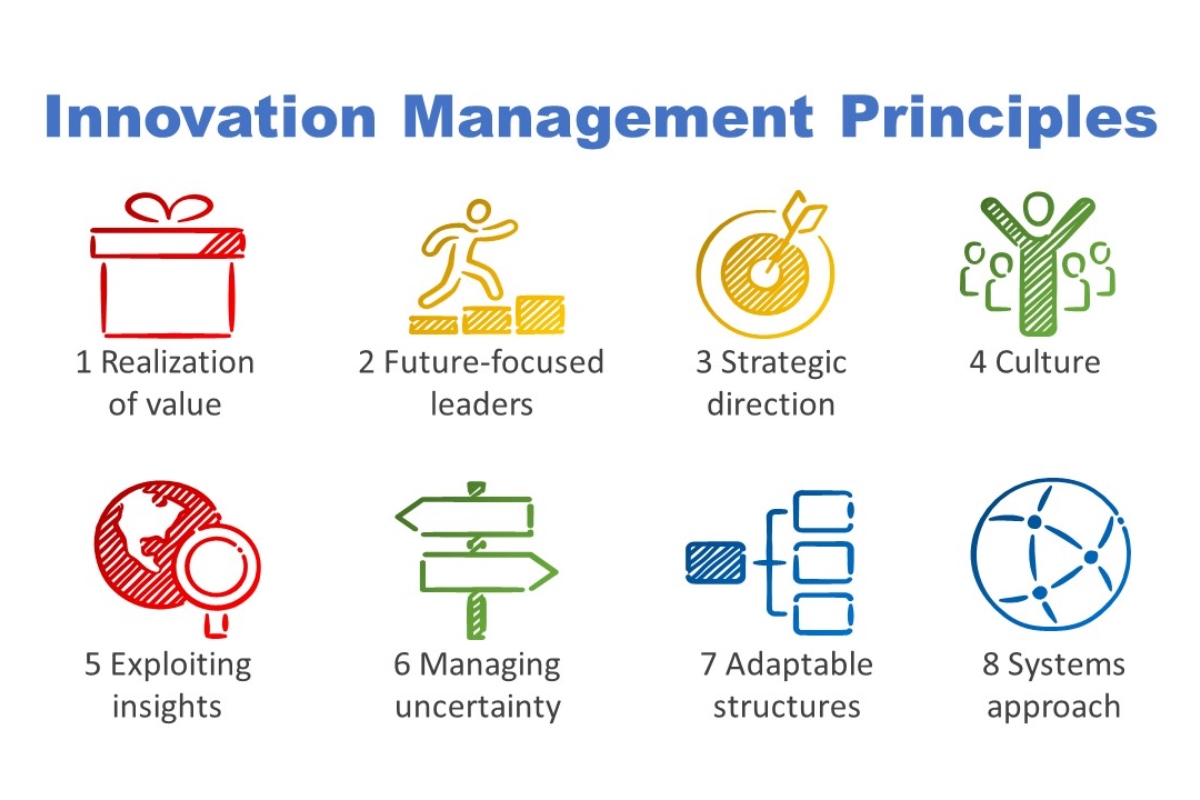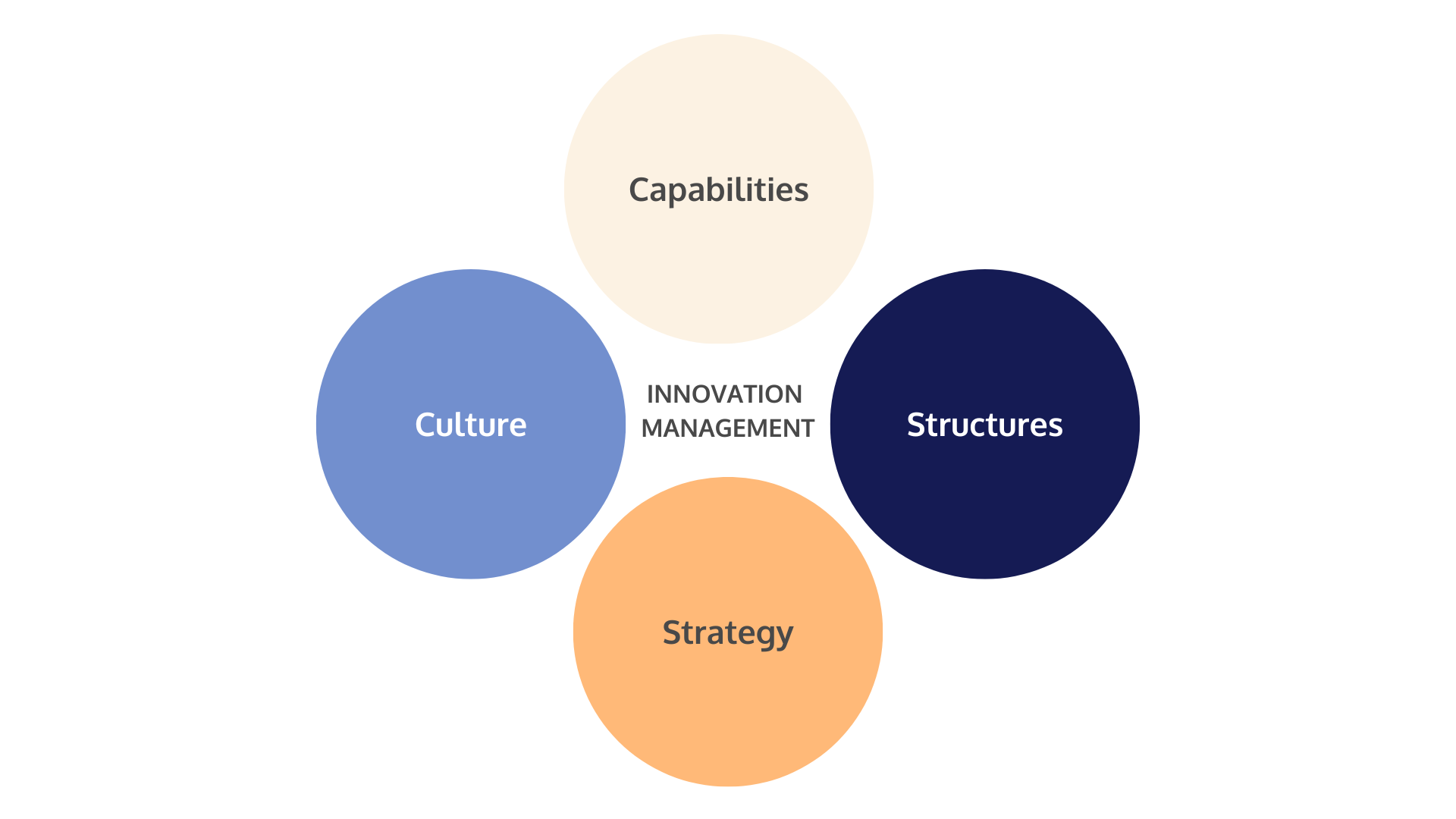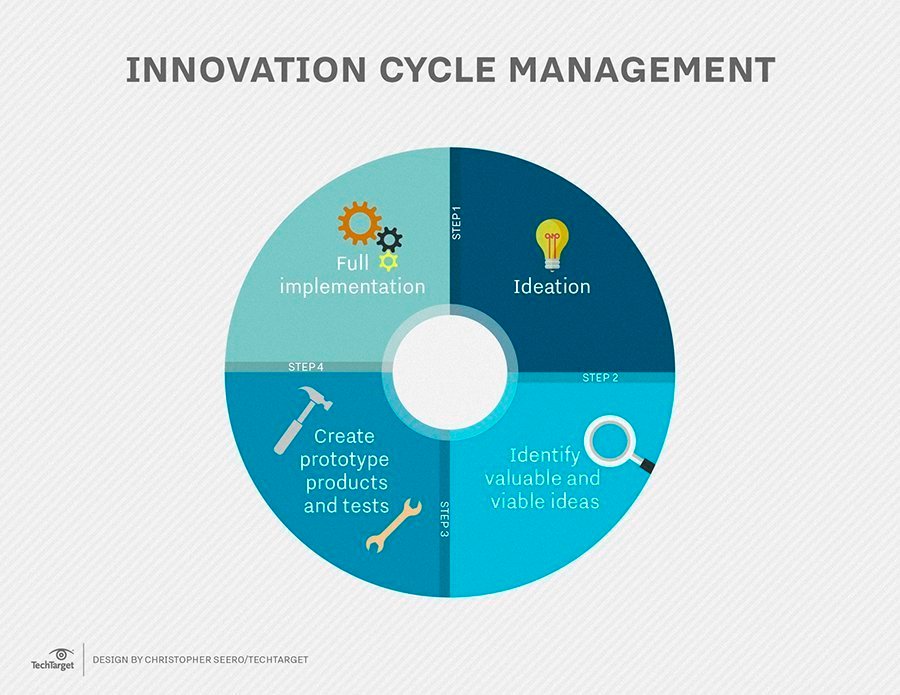The process of managing a company’s innovation strategy, from the first step of ideation to the last stage of successful implementation, is referred to as innovation management. It includes the decisions, activities, and practices associated with creating and carrying out an innovation strategy.
Innovation management, as defined by Gartner, is a business discipline that tries to promote a sustainable innovation process or culture within a corporation. These innovative management projects frequently employ a disruptive way of transformation that changes the business.

Source: innovation management principles
In the age of digital transformation, businesses must innovate more quickly and frequently. Innovation drives company growth and pushes businesses ahead of the competition.
Innovation management helps to develop new business models as well as new products, services, and technologies for an evolving marketplace. Moreover, it increases customer satisfaction and labour engagement.
Because nearly any new development in the business might be deemed innovative, it can be difficult to understand what innovation management entails in reality.
The best way to comprehend the topic is to break it down and examine each of the important parts of innovation management independently. The graphic below depicts the four aspects that are generally employed in the process.

Source: innovation management principles
Capabilities refer to the many abilities and resources available to a company for producing and managing innovation.
The capabilities portion is mostly concerned with people, as innovation is heavily reliant on the abilities of both individuals and teams collectively. It relates first and primarily to the employees’ abilities, unique insights, know-how, and practical skills. However, it also includes areas such as the organisation’s information capital and tacit knowledge, as well as its other resources and accessible financial capital, all of which may be required to generate innovation. Last but not least, the time, will, and authority required to carry out these tasks
The distinction between structures and capabilities is that structures allow for the efficient application of capabilities. This refers to the company’s organisational structure, processes, and infrastructure. The correct structures can act as a force multiplier, helping an organisation to run and innovate more efficiently. For example, few would ever see the light of day without the necessary communication channels, decision-making processes, and infrastructure for implementing ideas. This is where innovation management softwares like the one offered by Bloomflow can help.
One of the most important factors here is organisational structure. If every new innovative idea is required to go through the same chain of command and processes as small adjustments to the existing company, many innovations would be suffocated. Teams working on innovation must be able to move quickly, adapt to their surroundings, and make judgments that are independent of the old ways of doing things.
As a result, don’t try to impose the same rules and procedures on everyone in your company. When it comes to innovation, economies of scale simply do not work.
Working towards developing a so-called ambidextrous organisation is one of the more prominent techniques for developing a more innovative business. This simply means that the buiness is designed in such a way that new enterprises can operate independently of old ones.
If structures enable the successful application of capabilities, culture is what allows the organisation to gain people-related competencies. Businesses are considerably more likely to be able to recruit and retain the proper personnel if it has a pro-innovation culture.
A pro-innovation culture that is acceptable fosters the proper kind of behaviour while discouraging the wrong kind. As the effects accumulate, culture can make a significant difference in an organisation’s innovativeness. Here are some of the most widely accepted characteristics of innovation culture:
Finally, there is strategy. Simply said, strategy is the organisation’s plan for long-term success. However, it is crucial to remember that strategy is ultimately about making a deliberate decision from a number of viable possibilities in order to have the best chance of “winning,” and this choice should not be clearly separated from execution.
The relationship between innovation and strategy is a broad issue, but in essence, innovation is simply one of the tools for achieving your strategic objectives. There are situations where “accidental” innovation can offer unrivalled prospects large enough to justify completely revising your strategy, but these are extremely unusual and nearly hard to prepare for. Thus, the goal is to match your innovation activities with your strategy, which is often easier said than done.
In practice, you must provide the business enough freedom to innovate while also taking into account realistic limits such as your strategic emphasis, available resources, and your own talents.
All four characteristics have an impact on an organisation’s ability to innovate and manage innovation, which is why increasing it is rarely a simple exercise with a simple solution. If you want to be a good innovation manager, you must comprehend both the overall picture and the small components that make it up.
Broadly speaking, innovation can be incremental, breakthrough, or disruptive.
Incremental: In an era when organisations have to continually reinvent themselves, incremental innovation assists them in thriving by constantly upgrading current products, services, processes, or procedures.
Breakthrough innovation involves technological improvements that can propel a product or service ahead of its competitors within an existing category.
Disruptive innovations are concepts that, when adopted, have the potential to drastically alter market behaviour.
For the innovation management process to be successful, the organisation must encourage an innovative culture and make people feel valued. This will motivate staff to come up with good ideas in return.
Companies today use collaborative technology such as social networking to solicit feedback, which aids in the generation of a continual supply of ideas from stakeholders both inside and outside the firm.

Many firms use a systematic and cyclical strategy to make innovation management an ordinary element of business. Ideation is the initial step toward creativity, and encouragement and feedback foster a consistent flow of ideas. In a well-managed innovation process, the next phase is to identify the most useful and viable ideas. Companies can then proceed to develop prototype items based on the shortlisted concepts and test them to see how well they operate. It is critical to analyse the outcome of complete implementation to see whether the anticipated business goals were achieved once the concepts were executed.
What is your opinion on the topic? Let us know what you think on LinkedIn!